10 Magnificent Examples Of Ancient Egyptian Architecture
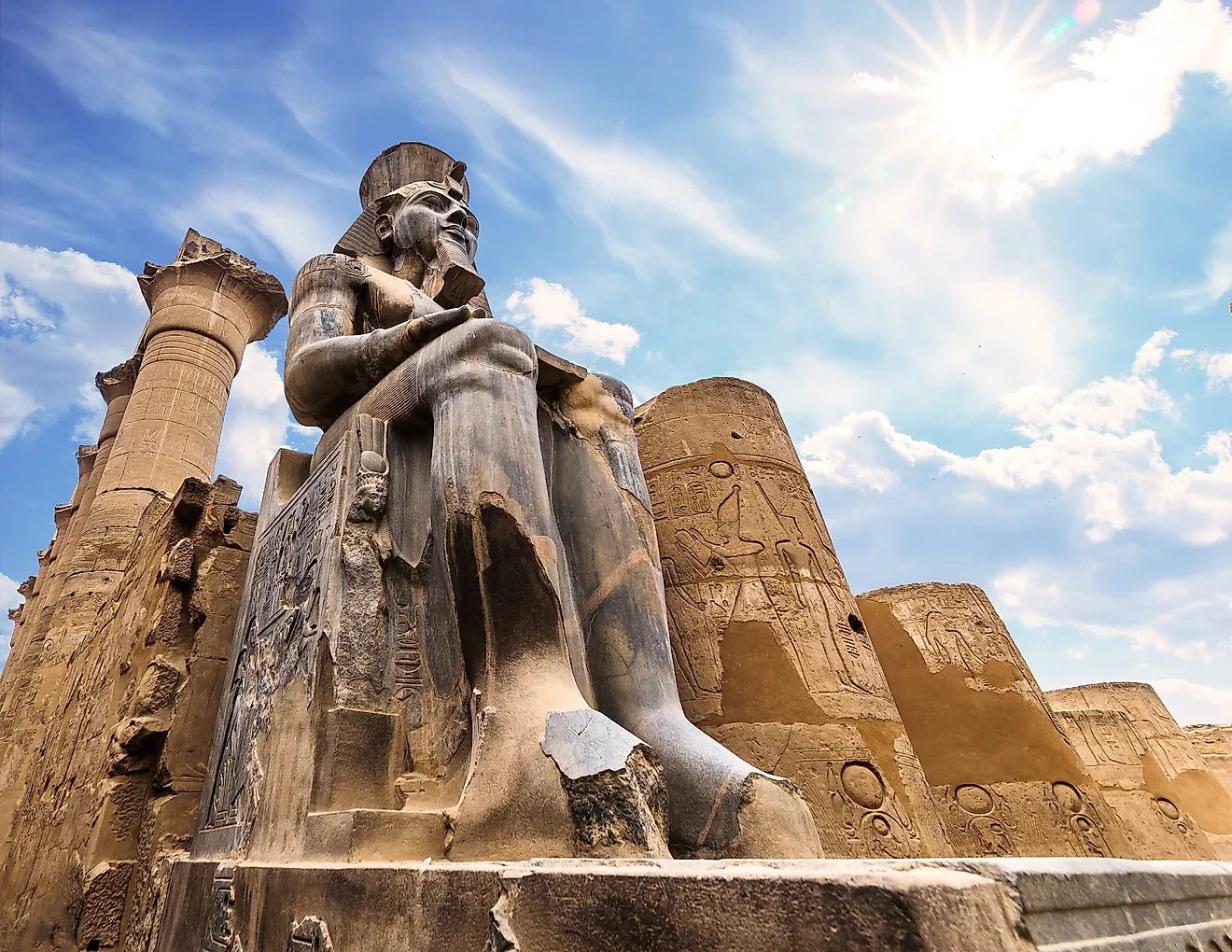
- The Great Pyramid of Giza is the oldest of the Seven Wonders of the Ancient World and is the largest of all surviving pyramids in Egypt.
- Karnak Temple is considered one of the largest religious complexes in the world.
- The Valley of the Kings is a mass burial site where many pharaohs and their families were laid to rest.
Tourists travel from all over the world to Egypt for the sole purpose of stepping into the past. While central hubs like Cairo have been modernized over the years, nothing encapsulates the ancient culture more than its architecture. From the towering pyramids at Giza to the cleverly hidden tombs at the Valley of the Kings, Egypt offers history buffs a chance to experience the grandeur and magnificence of the old world on a scale unparalleled by most countries.
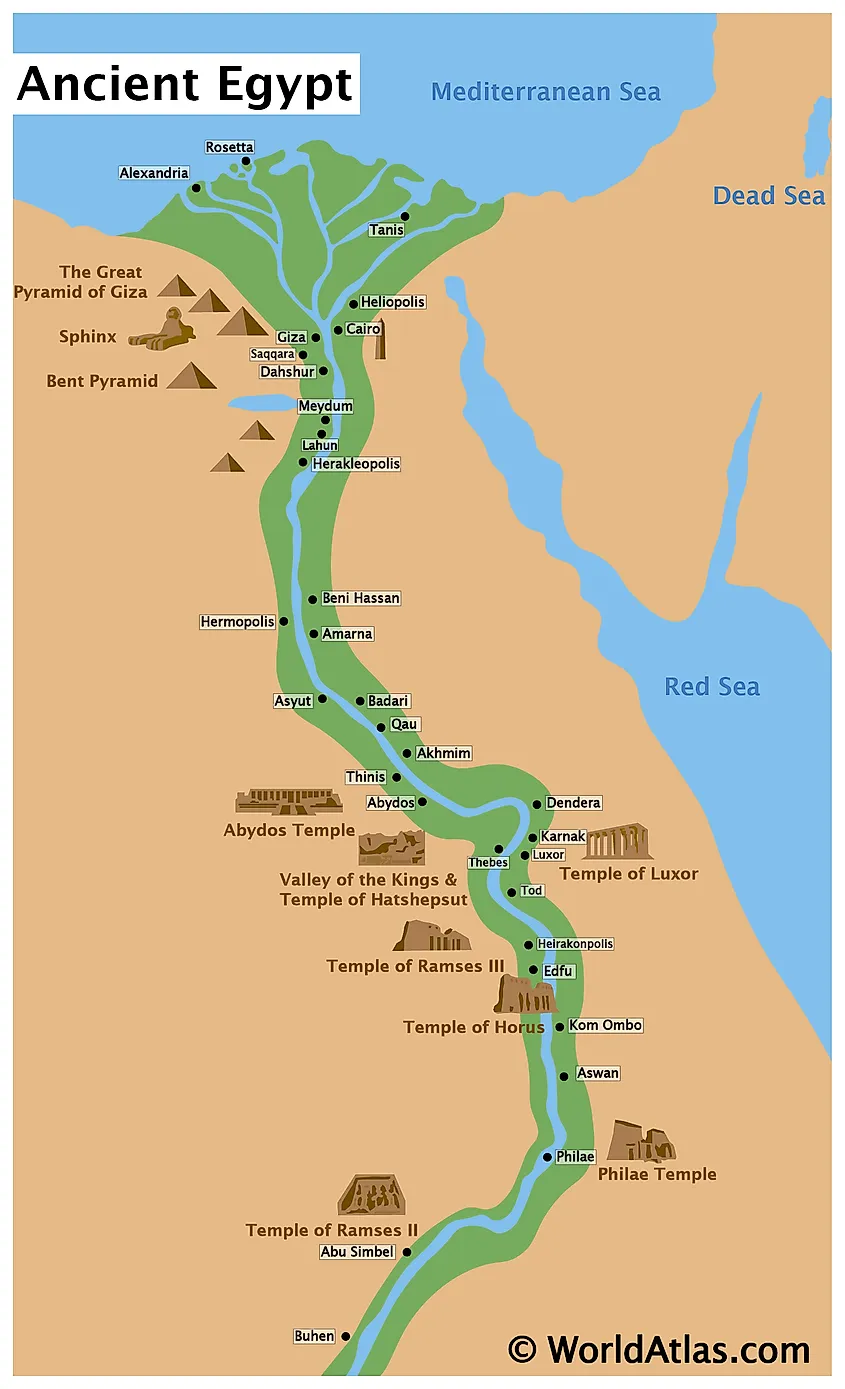
The following is a list of ten examples of ancient Egyptian architecture.
10. Abu Simbel Temples
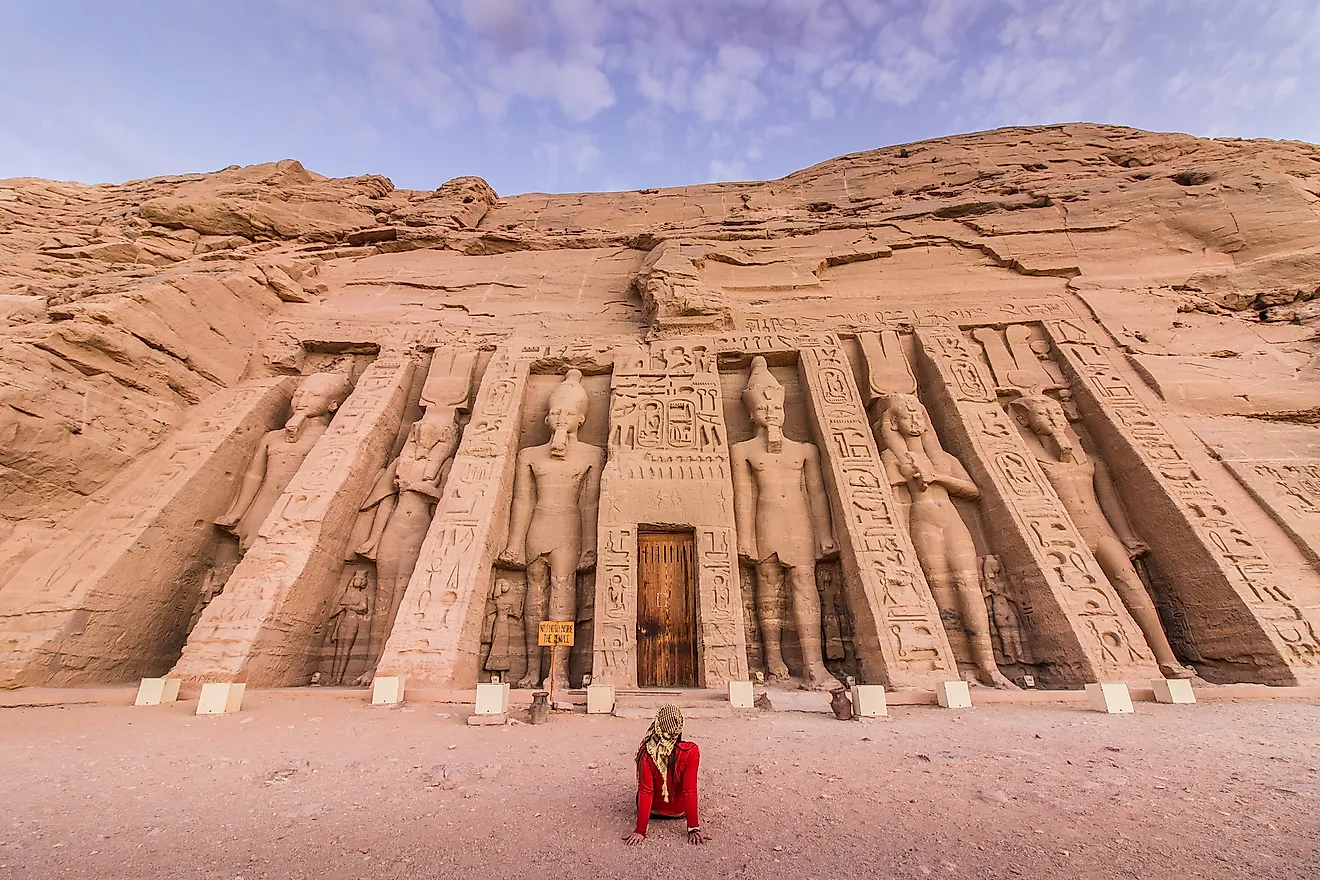
Carved out of massive solid rock, these two temples are located in southern Egypt on the banks of Lake Nasser. They were built under the reign of Pharaoh Ramesses II and dedicated to the gods Ptah, Ra-Horakhty, Amun, and Hathor. The exterior of the larger temple—also known as the Great Temple—features four twenty meter high statues of Ramesses himself, although one of the figures has been damaged due to the elements over the years. The Great Temple consists of three halls that extend 56 meters into the cliff. In 1979, the Abu Simbel Temples were declared a UNESCO World Heritage Site. Today, they are considered two of the grandest temples in all Egypt.
9. Colossi of Memnon
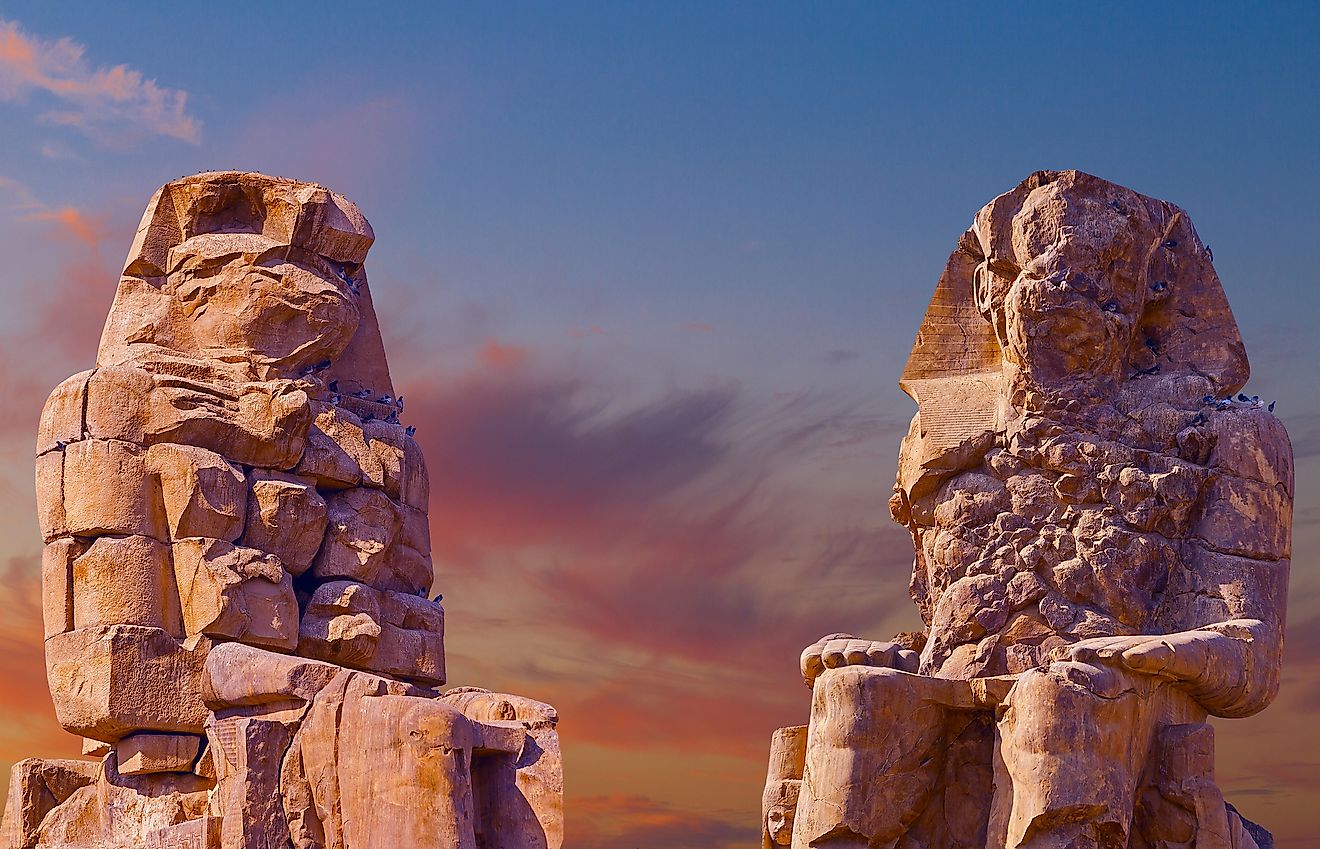
Located in the southern city of Luxor, the Colossi of Memnon are two giant statues of Pharaoh Amenhotep III. They were built out of blocks of quartzite sandstone and measure eighteen meters high. Both figures sit on thrones carved with imagery of the pharaoh’s mother, wife, and the Nile god Hapy. In a more ancient time, they marked the entrance to what had been the mortuary temple of Amenhotep, which was supposedly larger than anything else built in Egypt. While the distinct pharaoh shape of each statue is still noticeable today, one of the two has been partially destroyed; however, legend says the lower half is known to sing and that hearing this song blesses the listener with good fortune.
8. Great Pyramid of Giza
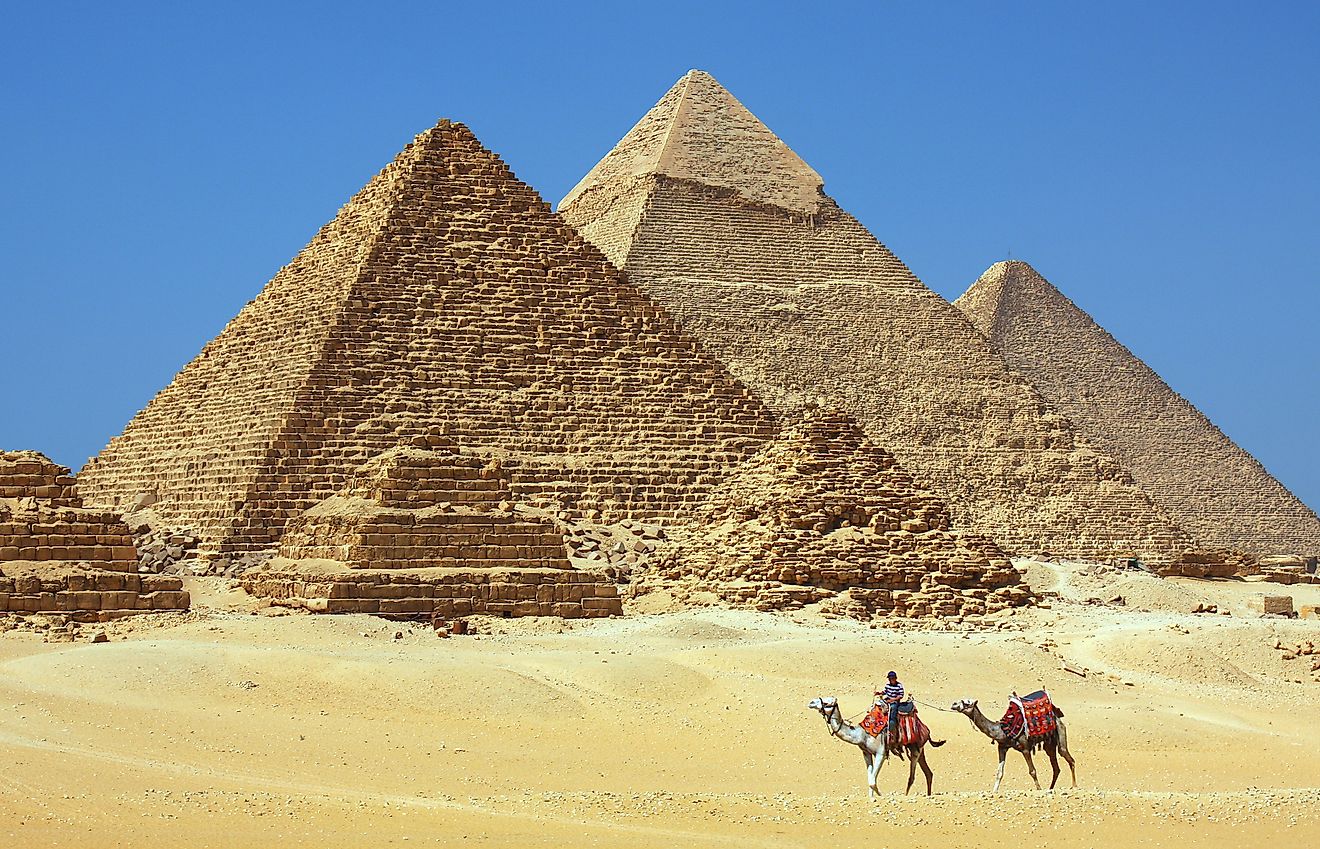
The Great Pyramid of Giza—also known as the Pyramid of Khufu or the Pyramid of Cheops—is the oldest of the Seven Wonders of the Ancient World. Built on the Giza plateau near modern day Cairo, it is the largest of all surviving pyramids in Egypt. For more than 4,000 years, it stood as the tallest structure in the world. Made out of 2.3 million blocks of limestone, it was originally 146.7 meters tall, but due to poor weather, it now measures 138.8 meters high and stretches 230 meters in length. The pyramid consists of three main chambers, but to trick thieves in search of Pharaoh Khufu’s treasure, numerous false passages and doors were also included in the construction. It is one of the three giant pyramids of Giza which make up the iconic image that adorns postcards and travel brochures.
7. Great Sphinx of Giza
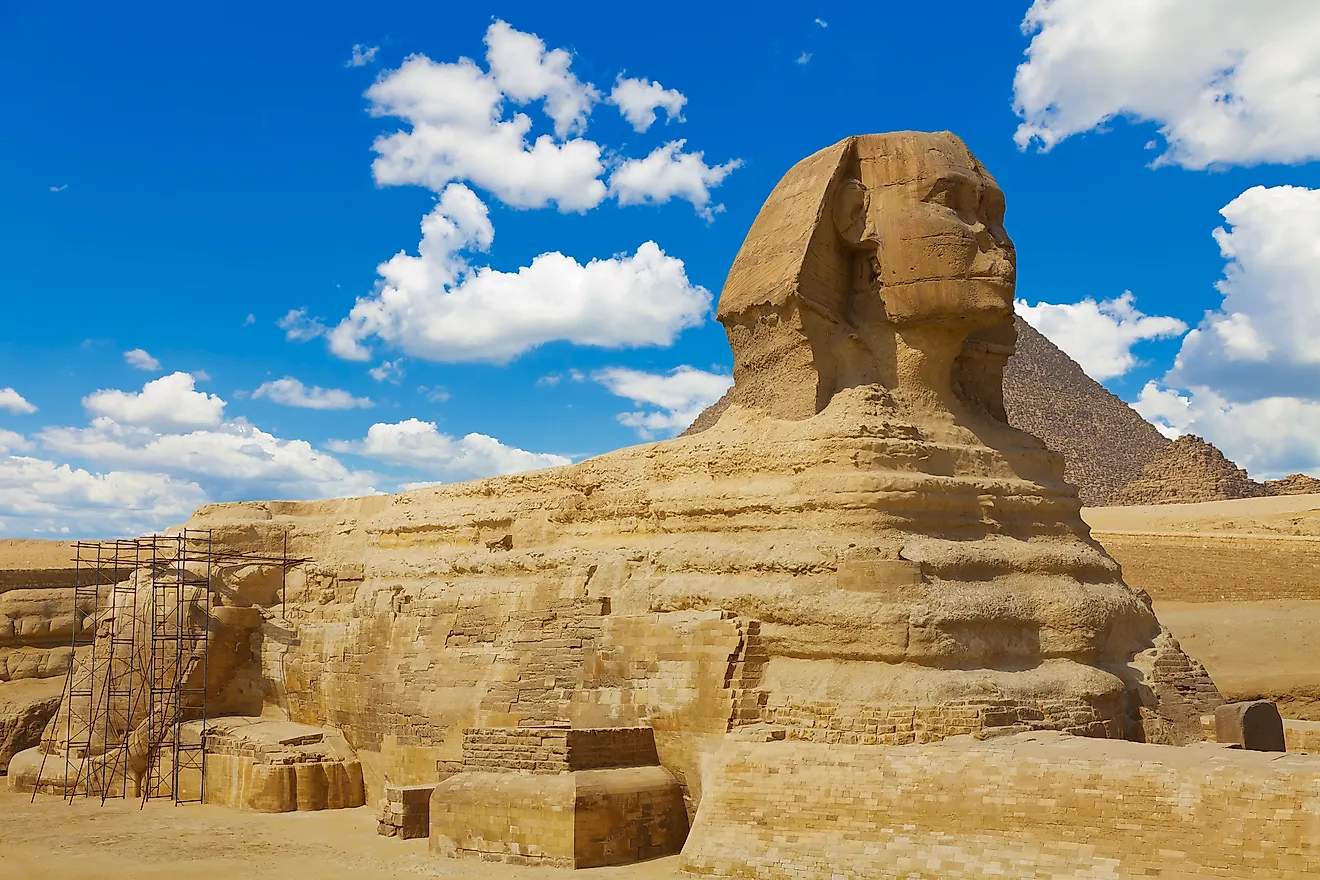
The Great Sphinx is a defining symbol of ancient Egypt. With the body of a lion and the head of a human, archaeologists believe that it represents Pharaoh Khafre, although some argue that it bears a closer resemblance to Khufu. Standing twenty meters high and 73 meters long, it guards the three pyramids at Giza. A distinctive feature is its missing nose. Rumors claim that Napoleon’s troops shot it off with a cannon in 1798, but ever the point of contention, other scholars believe it was lost long before the French general arrived. Like most structures from ancient Egypt, the Sphinx has deteriorated over time, but restoration efforts have been underway since the mid-1900s.
6. Karnak Temple
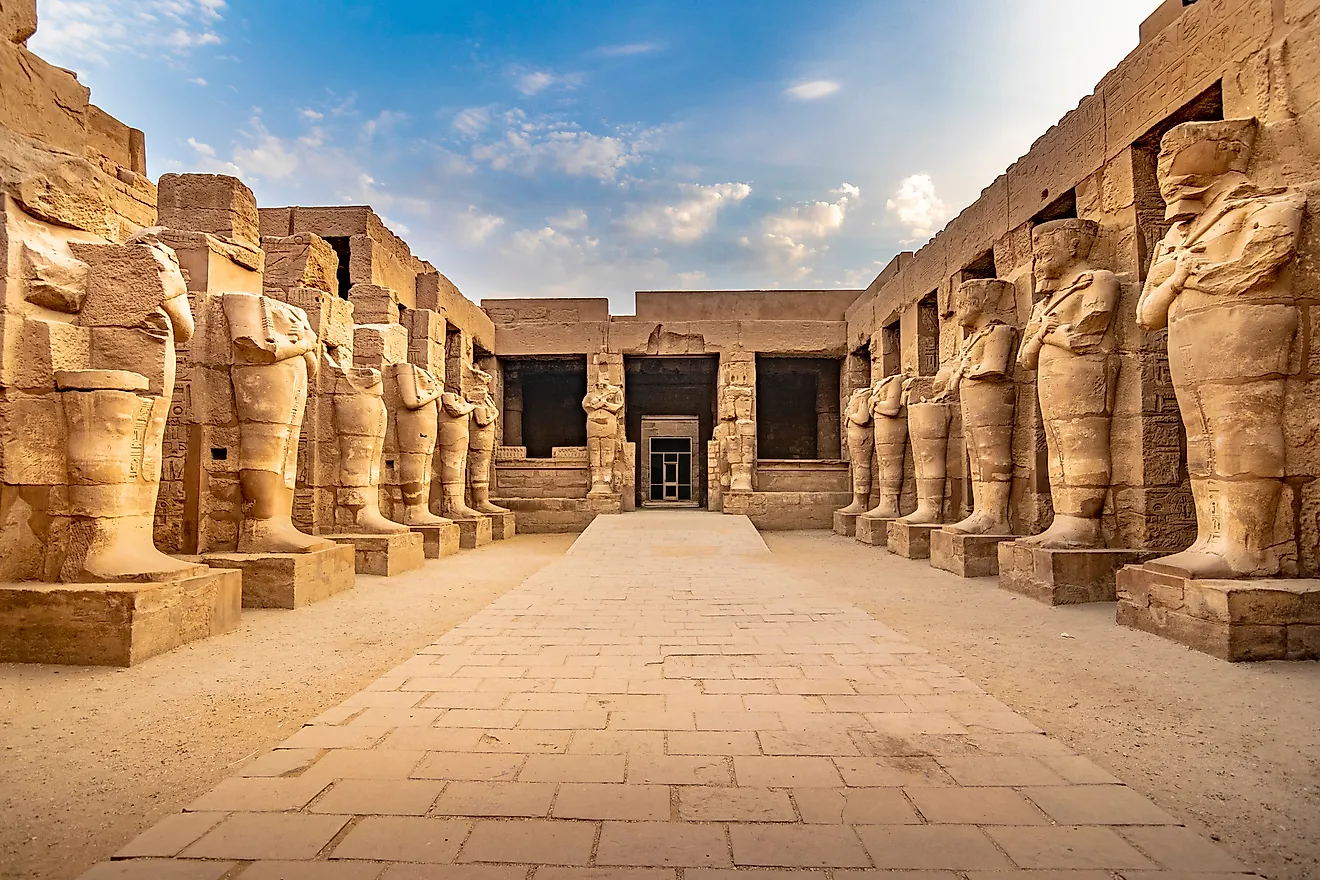
Karnak is the modern day name for the Temple of Amun located at Thebes. Construction began during the reign of Pharaoh Senusret I, but it was built over 2,000 years under the influence of different rulers. It was dedicated to Amun, the god of sun and air, but it was also a place for ancient Egyptians to worship Osiris, Isis, and Ptah, making it one of the most sacred landmarks in the country. Karnak houses several temples, the most famous being Hypostyle Hall, which contains 134 massive columns arranged in sixteen rows. It is considered one of the largest religious complexes in the world and was declared a UNESCO World Heritage Site alongside Abu Simbel in 1979.
5. Luxor Temple
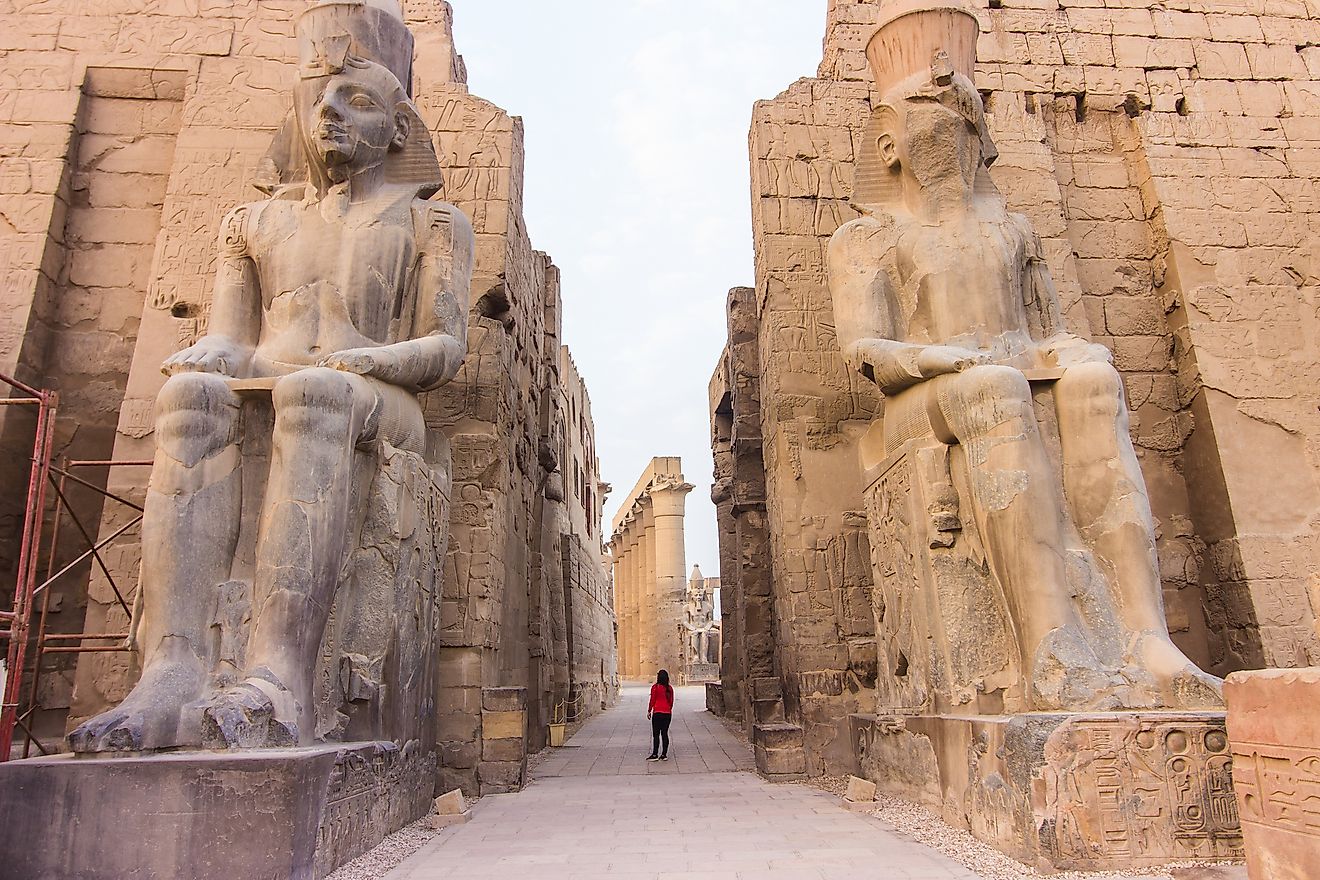
There are several ancient religious structures in the southern city of Luxor, but the most famous is Luxor Temple. Located near the Nile River, it was dedicated to the god Amun and was the site where many Pharaohs were crowned. Made of sandstone, it was built throughout the reigns of numerous rulers, including Ramesses II and Amenhotep III. Ramesses’s influence is notable in the large statues of himself stationed at the temple’s entrance. Originally, there were two large obelisks out front as well, but only one remains; the other is displayed in Paris. Beyond the entrance is the Great Colonnade Hall. Over the years, many of the walls were torn down and used as building materials elsewhere.
4. Pyramid of Djoser
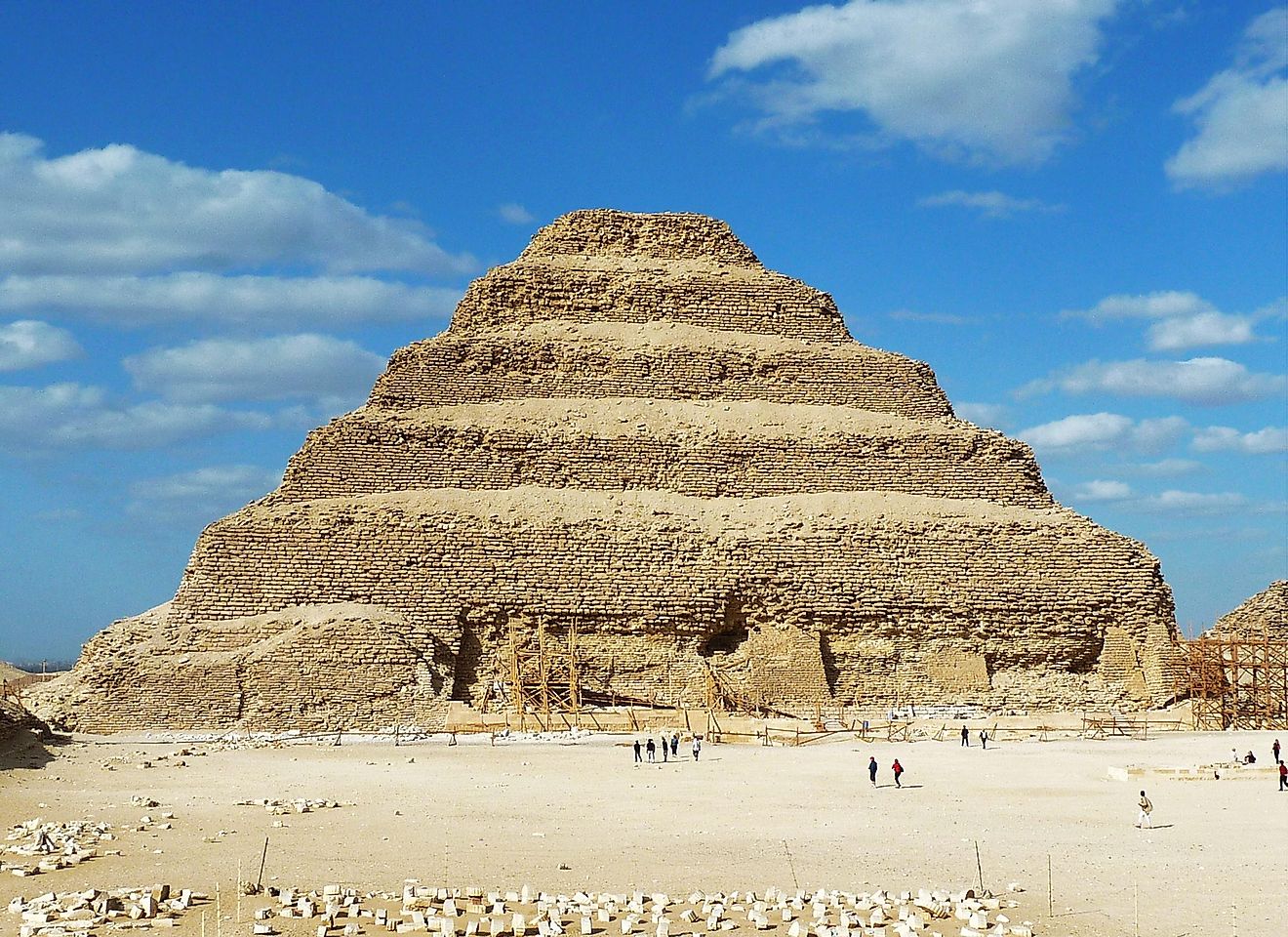
The Pyramid of Djoser is located in the Saqqara necropolis, the burial ground of the ancient Egyptian capital of Memphis. It was designed as Pharaoh Djoser’s tomb, but members of the royal family were buried there as well. With a height of 62.5 meters, it is made out of large blocks of limestone which form a multi-tiered structure that gets progressively smaller toward the top. Unlike the pyramids at Giza, it has a flat roof. Up until that point, mastaba tombs were typically rectangular, but Imhotep, architect and chancellor to Djoser, wanted to construct a much more impressive monument. Czech Egyptologist Miroslav Verner refers to the Pyramid of Djoser as a milestone in the evolution of stone architecture.
3. Temple of Edfu
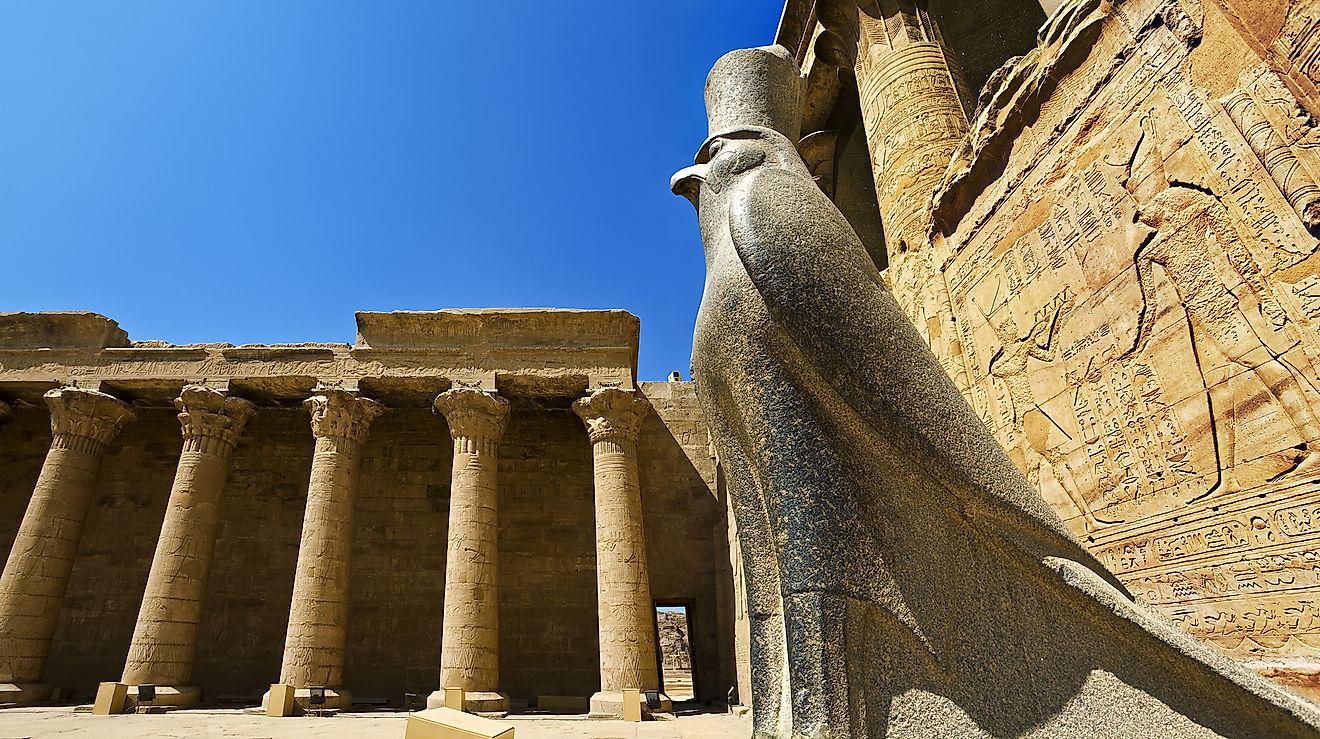
Dedicated to Horus the falcon-headed god, the Temple of Edfu is the second largest temple in Egypt. Its most impressive feature is the massive pylon—a gateway flanked by two large towers—which measures 36 meters high. The gateway leads directly to a large courtyard with 32 columns and walls carved with scenes of various festivals. The temple itself is 140 meters long and is one of the best preserved religious monuments from ancient Egypt. After the shrine fell into disuse following the persecution of pagan worship, desert sand buried it deep, but protecting most of the original structure. Excavation efforts began in the mid-1800s by French archaeologist and Egyptologist Auguste Mariette.
2. Temple of Hatshepsut
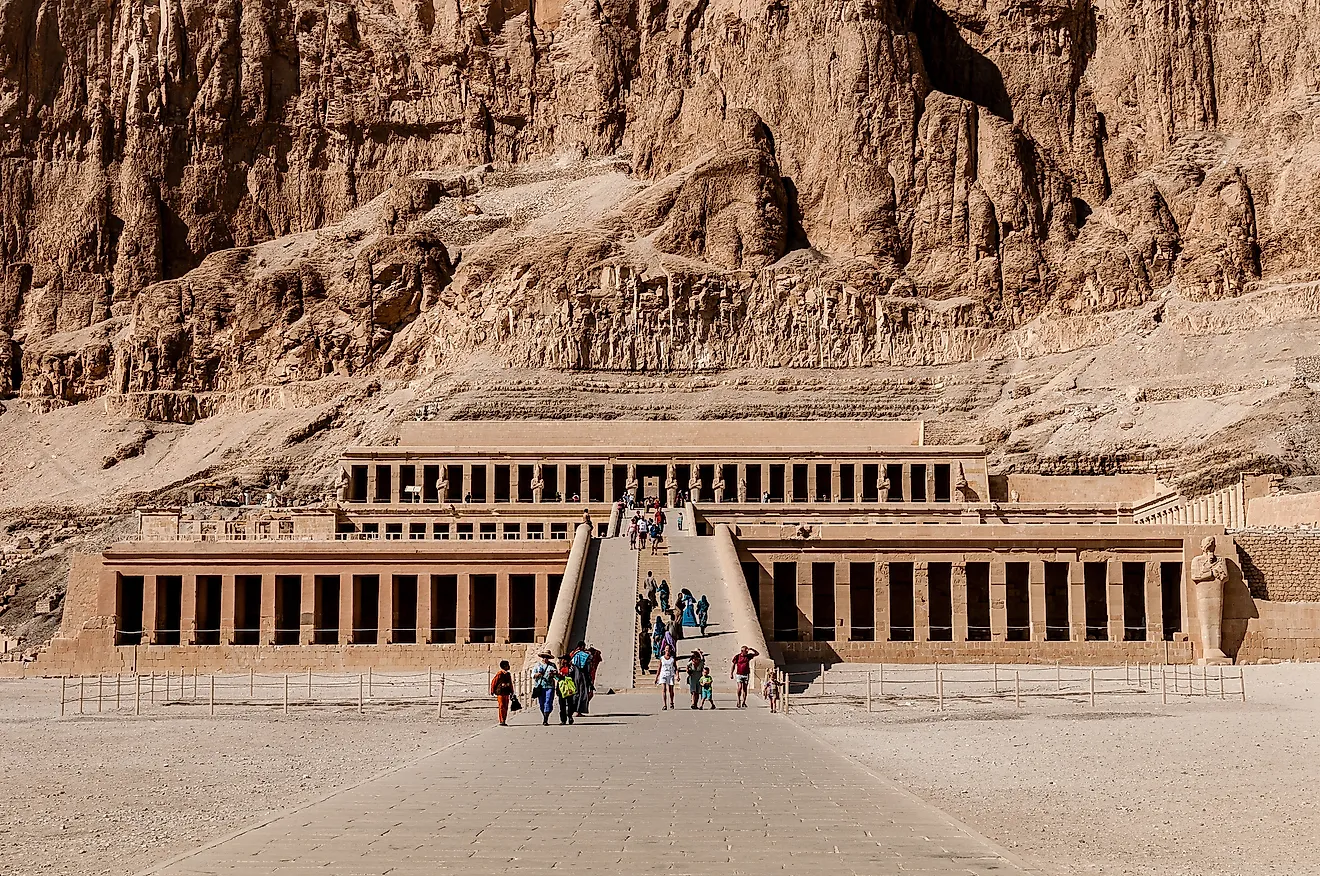
The Temple of Hatshepsut is a mortuary temple at Deir el-Bahari, located across the Nile from the city of Luxor. Built under the reign of Pharaoh Hatshepsut, it was dedicated to Amun and designed to honor the queen in the afterlife. It holds a special place in the annals of ancient Egyptian history as it was constructed under the guidance of a female pharaoh, one who brought a period of peace and prosperity to the country. Modeled after the much smaller Temple of Mentuhotep II, it is recognizable by its three distinct levels connected by a series of ramps. Inside is a bounteous collection of colonnades, statues, carved reliefs, and paintings.
1. Valley of the Kings
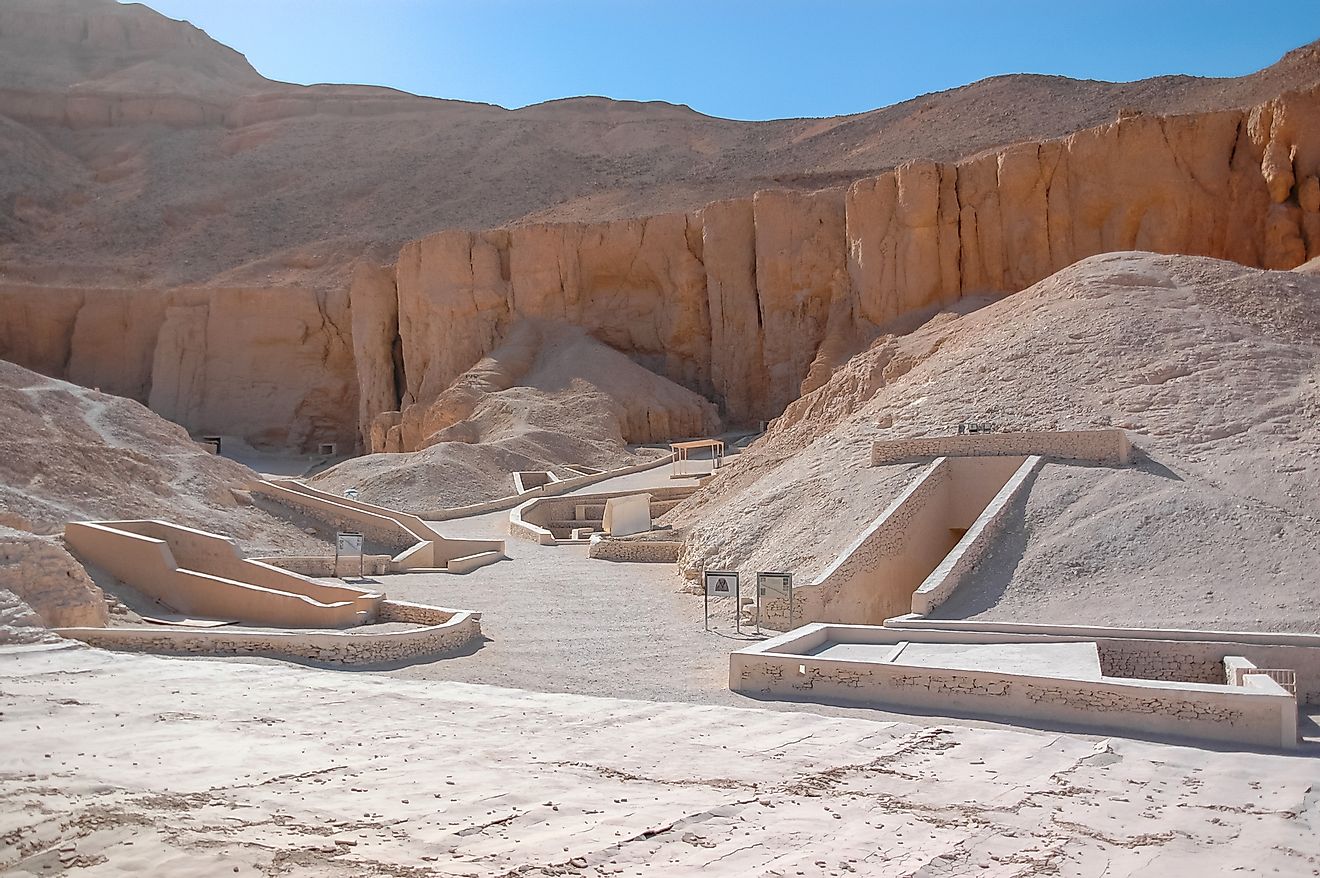
The Valley of the Kings is a mass burial site where many pharaohs and their families were laid to rest. Fearing for the safety of their treasures, the ancient kings devised a plan to conceal their tombs deep within the valley behind Deir el-Bahari. Throughout the years, archaeologists have found over 63 tombs. The most remarkable of these tombs belongs to King Tutankhamun—or King Tut as he is famously known. Inside, Howard Carter found the boy king perfectly preserved as a mummy and an array of precious artifacts that can be viewed at the museum in Cairo. The Valley of the Kings was also declared a UNESCO World Heritage Site in 1979.











